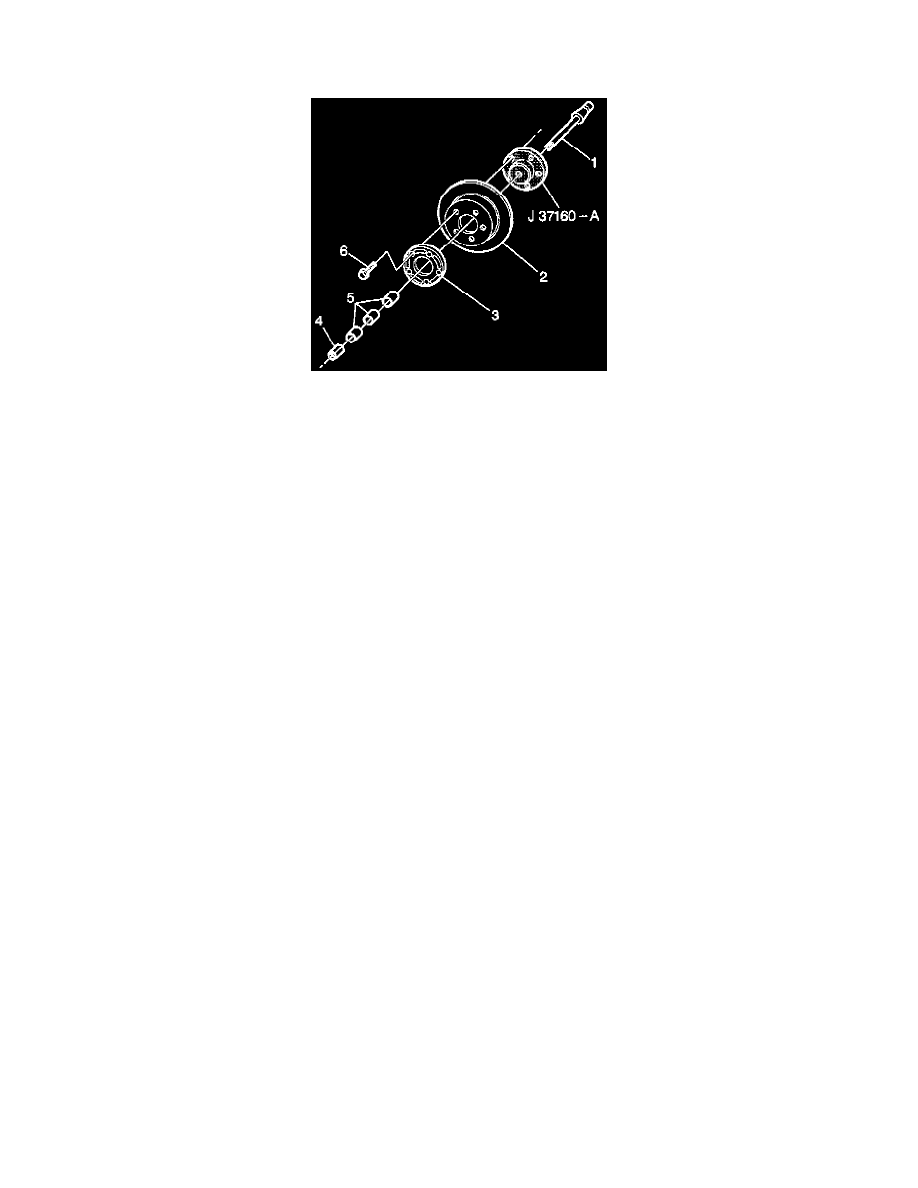Century V6-3100 3.1L VIN M SFI (1998)

Brake Rotor/Disc: Service and Repair
Refinishing Brake Rotor (Rear)
Tools Required
^
J 37704 Disc Brake Lathe
NOTICE: Do not refinish parking brake drum surface of rotor. Refinishing will result in reduced performance of parking brake.
The following two procedures are recommended and achieve adequate results using two different off-vehicle disc brake lathes. If any other lathe is used,
follow that lathe's instructions and recommendations:
AMMCO BRAKE LATHE
Refer to the manufacturer's instructions for all initial setup and cutting procedures.
ACCU TURN BRAKE LATHE
GM Dealer Equipment (One Cut Refinishing Procedure)
Refer to the manufacturer's instructions for all initial setup and cutting procedures.
NONDIRECTIONAL FINISHING
Ensure that the rotor surface is nondirectional by dressing the rotor surfaces with one of the following sanding disc tools (or equivalent) using 120 grit
aluminum oxide sandpaper:
^
Ammco 8750 Safe Swirl Disc Rotor Grinder
^
Accu Turn 433170 Non-Directional Swirl Finisher
Use the following procedure for nondirectional finishing:
1. Sand each rotor surface with moderate pressure for a minimum of 60 seconds.
If the brake lathe is not equipped with an adequate nondirectional finishing tool, use a sanding block with 150 grit aluminum oxide sandpaper.
2. With the rotor turning at the equipment manufacturer's highest recommended cutting speed, sand each rotor surface for a minimum of 60 seconds
using moderate pressure.
3. After the rotor has been sanded, clean each surface with denatured alcohol or a suitable brake cleaner.
The finished rotor surface should be as close as possible to that of a new rotor. Failure to obtain the best possible rotor finish may affect braking
performance.
ROTOR MOUNTING ADAPTER
^
Tools Required
-
J 39144 Brake Rotor Mounting Adapter
NOTICE: Whenever the brake rotor has been separated from the wheel bearing flange, clean any rust or foreign material from the mating surface
of the rotor and flange. Failure to do this may result in increased lateral runout of the rotor and brake pulsation.
1. Inspect all the mounting hardware for the following conditions:
^
Rust
^
Nicks
